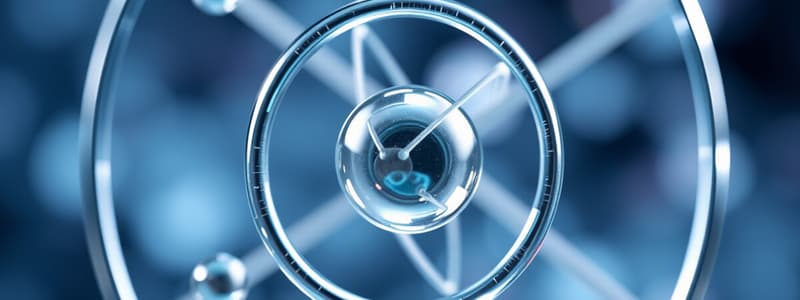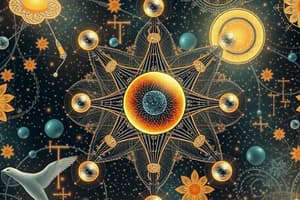Podcast
Questions and Answers
What is an element?
What is an element?
- A type of compound
- A substance that cannot be broken down into simpler substances by chemical or physical means (correct)
- A mixture of different substances
- A substance that can be broken down
What kinds of particles make up atoms?
What kinds of particles make up atoms?
Protons, neutrons, and electrons
What are isotopes?
What are isotopes?
Atoms with the same number of protons but different numbers of neutrons
What are compounds and why do they form?
What are compounds and why do they form?
What are ionic bonds?
What are ionic bonds?
What are covalent bonds?
What are covalent bonds?
What are metallic bonds?
What are metallic bonds?
Name the three types of particles in an atom and explain how they differ.
Name the three types of particles in an atom and explain how they differ.
Flashcards are hidden until you start studying
Study Notes
Elements
- Defined as substances that cannot be broken down into simpler substances by chemical or physical means.
Atomic Structure
- Atoms consist of a nucleus composed of protons and neutrons.
- Electrons orbit around the nucleus, completing the atomic structure.
Isotopes
- Isotopes are variations of atoms that contain the same number of protons but differ in the number of neutrons.
Compounds
- Compounds consist of two or more elements that are chemically combined in specific proportions.
- Formation of compounds occurs when atoms achieve greater stability.
Ionic Bonds
- Ionic bonds result from the electrostatic attraction between positively and negatively charged ions.
Covalent Bonds
- Covalent bonds are formed when atoms share electrons, creating a stable electron arrangement.
Metallic Bonds
- Metallic bonds involve the sharing of electrons among metal ions, allowing for conductivity and malleability.
Atomic Particles
- The three primary particles in an atom are:
- Protons: Dense particles with a positive charge.
- Neutrons: Equal in density to protons but carry no charge.
- Electrons: Small particles with a negative charge, located in orbitals around the nucleus.
Studying That Suits You
Use AI to generate personalized quizzes and flashcards to suit your learning preferences.




